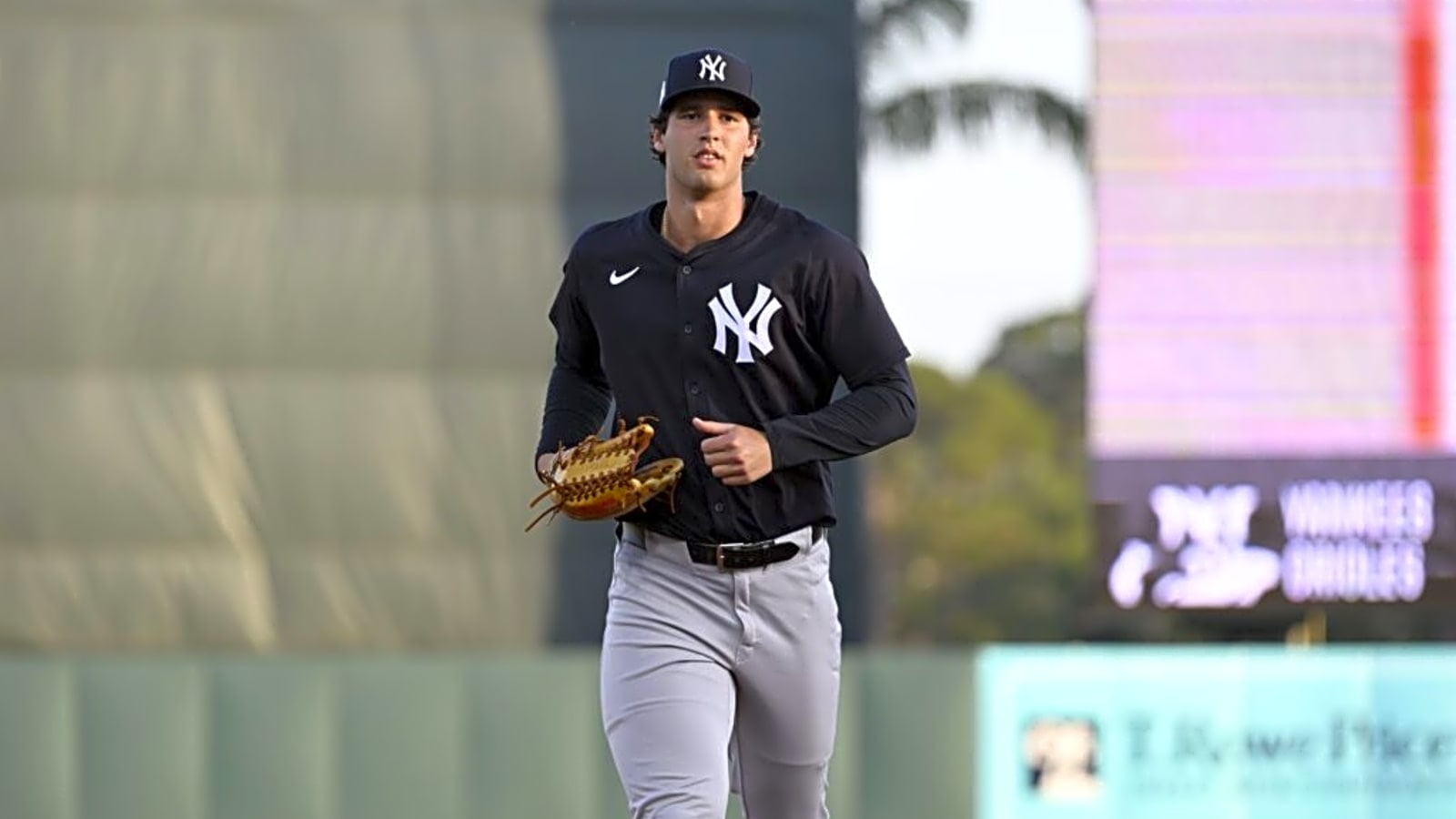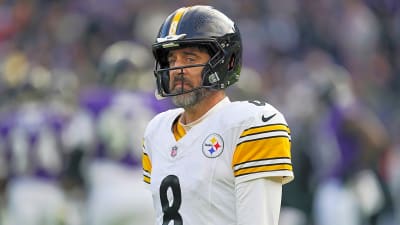
During this year’s trade deadline, the New York Yankees did plenty of buying. From reshaping their bullpen with stars like David Bednar and Camillo Doval, to picking up solid role players like Jose Caballero and Ryan McMahon, this deadline was big for the club.
Along the way, plenty of the team’s top prospects kept coming up in discussions. The name that came up the most often was former first-rounder Spencer Jones, a superb power threat when everything is going his way. At the time, Jones was red-hot, and the Yankees had the chance to capitalize on this.
Instead, the Yankees stood pat, electing to keep Jones and trust their player development rather than selling him for a bigger piece. While this seemed like a slam-dunk with how he played around the deadline, Jones has since hit a huge slump, proving that these types of moves are very risky.
Jones is the perfect example of the volatility that comes with prospects. His career has often been marked by immense promise, as well as caution, leading some to raise serious concerns about his future, which other players like him also share.
Why is Jones So Volatile?
Jones has often had the reputation of being one of baseball’s hardest players to project. His light-tower power allows for some unreal projections, with comps ranging from Yordan Alvarez to Aaron Judge.
However, Jones also comes with incredibly concerning strikeout numbers and overall weak plate discipline, qualities that don’t often translate regardless of how strong the rest of a player’s tools may be.
It’s quite difficult to project a future for these players, as you may end up with a prolific power hitter or a player who struggles to find his footing in the big leagues.
For example, after Jones was finally promoted to Triple-A back on June 27, he went on to slug 13 homers in his first 23 games, while also slashing .383/.440/.862 with a 225 wRC+. He also had a performance for the ages back on July 24, a game in which he slugged three homers.
For a moment, it also looked like he had reigned in his plate discipline slightly, as his strikeout rate during this time sat around 25% as opposed to nearly 34% in Triple-A. This type of player we were seeing Jones become seemed like the 90th-percentile outcome the Yankees had been dreaming of.
Due to this, the Yankees elected to hold onto Jones, hoping for a great outcome. After all, if all goes to plan, there’s the chance they could be looking at an unreal power threat, something that would be especially valuable with the Yankee Stadium short porch.
Unfortunately, some regression to the mean was bound to happen.
Jones has struggled mightily since deadline day passed. In this timeframe, Jones has slashed .154/.250/.215 with one homer and a 29 wRC+. Jones’ strikeout rate also ballooned to the heights it saw in Double-A, as it climbed back up just shy of 33%.
Jones has really begun to run into some trouble for the first time in Triple-A, as he’s gone through an absolutely brutal slump since deadline day. One moment, Jones is slugging homers left and right, and the next minute it seems like he can barely make contact consistently.
These types of tremendous highs and lows are what make him such a difficult player to project, rank, and value moving forward.
What Does This Tell Us About Prospects as a Whole?
When players see such a drastic change, going from an elite stretch to being a struggling hitter in Triple-A, we can learn a lot about prospects as a whole. Prospects are extremely volatile assets, and moments like this are a stunning reminder.
While it’s fun to get wrapped up in the talents these players are showcasing in the lower levels, these tools are far from refined. Even though the challenges of the upper minors and major leagues are appreciated, they’re often undersold when projecting top prospects.
According to the most recent data we have, only approximately 10% of all minor-league players appear in one game, meaning 90% of the competition these top prospects face will never touch the major leagues. While all the talent these players face will still be pro-caliber, they won’t match the talent they’ll see as they climb the system.
As of late March 2025, nearly 20,800 players have ever played at least one game in the major leagues. Of these players, just over 1,500 have only ever appeared in one game. So, even when these players reach the big leagues, there’s an even smaller chance that they’ll last at the level.
Of course, the level where you see the most quality talent is Triple-A, the level where most players — including Jones — are tested the most. At this level, players start to face former big leaguers and the best talent they’ll see at once in the minors.
This often culminates in instances like we’re seeing in Jones right now. Despite his hot start, pitchers have learned more about what he can handle, making it easier to attack him than it was initially.
While this adversity is guaranteed to come eventually, what truly matters is how the individual players respond afterwards. Whether it’s an adjustment or a player simply having more balls fall for base hits, these stretches tell us the most about who a player actually is and how they’ll handle major-league challenges.
Is Selling High Always the Best Route?
Given the difficulty of projecting prospects, especially players with similar profiles to Jones, there’s an interesting question that quickly arises: Is it always best to sell high on your prospects when you still can?
This question is quite complicated to say the least. There are plenty of situations across the history of the sport where we can argue in favor of selling high on top prospects, but there are just as many examples where we can see the opposite theme begin to develop.
One example that stands out in my mind is the trade that sent Chris Sale to the Boston Red Sox back in 2016. At the time, the deal seemed like a haul for the Chicago White Sox. However, looking back on it, we can see where the volatility of prospects played a big role.
The package was headlined by Yoan Moncada and Michael Kopech, two players who were widely regarded as top 100 prospects at the time of the trade. This applied even more to Moncada, who was often regarded as the top prospect in the minor leagues. The White Sox ultimately bought high on a prospect package that didn’t end up panning out as they expected.
Moncada ended up having a couple of nice seasons in Chicago, which included a season where he recorded over 5.0 fWAR, but he struggled to put it together outside of a few good seasons.
Kopech’s story is another example of where selling high on a prospect significantly benefited the Red Sox. Due to injuries and other circumstances, Kopech went from a potential fireballer ace to a reliever at his peak. He also didn’t truly put it together until the 2021 season, five seasons after he was initially dealt.
The Red Sox ended up acquiring Chris Sale, who had some of the best pitching seasons in Red Sox history. He appeared in two All-Star Games, narrowly missed a Cy Young Award with a 308 strikeout campaign, and ultimately helped the Red Sox win a World Series in 2018.
Instances like this trade help explain the benefits of selling high on teams’ prospects, but there are plenty of examples that show the other side.
For example, J.P. Crawford was widely considered a top-five prospect in the sport back in 2016, and his name was floated around in trade rumors for frontline pitching when he was with the Phillies.
They elected to keep Crawford, and he went on to struggle with the team before being flipped for much less later on, when he was dealt to the Seattle Mariners for Carlos Santana.
Similar things can be said about Clint Frazier, who, while being a top prospect, was floated around in nearly every trade proposal there was. The Yankees elected to keep Frazier while he was a prospect, and he ended up not panning out for the team.
Of course, this question is a bit subjective depending on the player, as some prospects are more worth holding on to due to their high ceilings than others. However, we can realize the risks that come with both selling high on prospects and holding on to your top prospects.
If the Yankees had sold high on Jones, it’s likely they could’ve got a solid big-league player in return. With the risks that come with his game, this could’ve potentially worked out in their favor. There’s also the chance that Jones’ immense power allows him to become one of the best power threats in the sport.
As for this instance, we have to wait and see how things will shake out down the line. However, his drastic hot and cold streaks point to the volatility of prospects, something teams must keep in mind.
Stats were taken prior to play on August 21.
More must-reads:
- Jorge Polanco signing shows New York Mets' desperation
- Yankees set a condition to re-sign Cody Bellinger
- The 'AL and NL MVPs since 2000' quiz
Breaking News
Trending News
Customize Your Newsletter
 +
+
Get the latest news and rumors, customized to your favorite sports and teams. Emailed daily. Always free!








